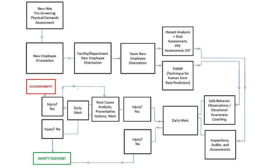Columns
Editorial Comments
50 years of OSHA
Agency hits landmark amidst many changes, unprecedented times
May 13, 2021
Thought Leadership
Risk Management: subjective perspectives, risk assessments and ethical dilemmas
May 13, 2021
Safety Talk
Preparing for OSHA: How to conduct internal inspections and audits
May 13, 2021
Editorial Comments
CDC and OSHA recently updated workplace guidance related to Coronavirus
April 27, 2021
Thought Leadership
A tangled web: subjective perspectives, risk assessments and ethical dilemmas
Part 1 of 3
April 27, 2021
Best Practices
Can PWFA transform how OHS is practiced?
Pregnant workers bill could be enacted this year
April 27, 2021
Never miss the latest news and trends driving the safety industry
eNewsletter | Website | eMagazine
JOIN TODAYCopyright ©2024. All Rights Reserved BNP Media.
Design, CMS, Hosting & Web Development :: ePublishing















